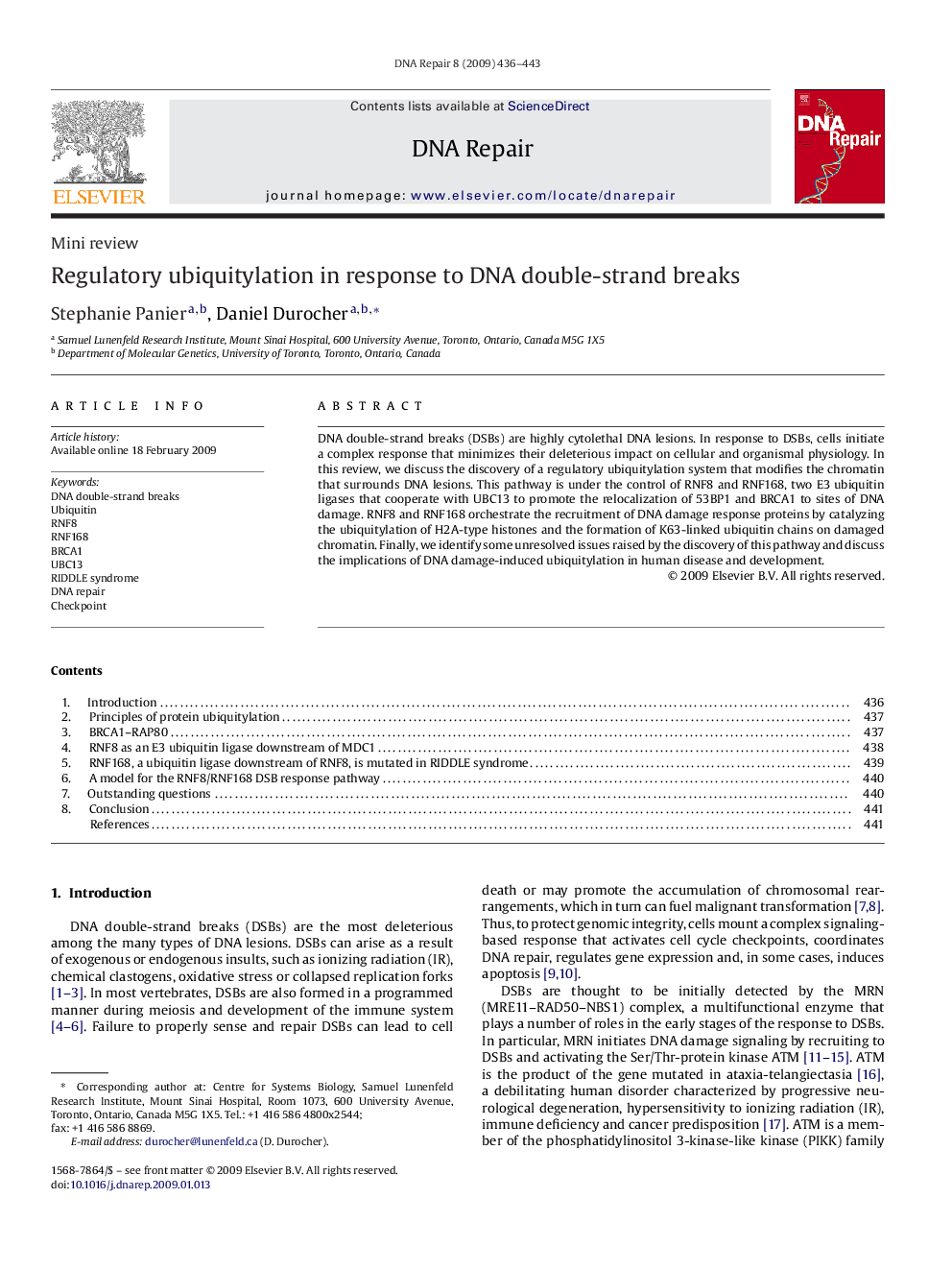| Article ID | Journal | Published Year | Pages | File Type |
|---|---|---|---|---|
| 1981305 | DNA Repair | 2009 | 8 Pages |
DNA double-strand breaks (DSBs) are highly cytolethal DNA lesions. In response to DSBs, cells initiate a complex response that minimizes their deleterious impact on cellular and organismal physiology. In this review, we discuss the discovery of a regulatory ubiquitylation system that modifies the chromatin that surrounds DNA lesions. This pathway is under the control of RNF8 and RNF168, two E3 ubiquitin ligases that cooperate with UBC13 to promote the relocalization of 53BP1 and BRCA1 to sites of DNA damage. RNF8 and RNF168 orchestrate the recruitment of DNA damage response proteins by catalyzing the ubiquitylation of H2A-type histones and the formation of K63-linked ubiquitin chains on damaged chromatin. Finally, we identify some unresolved issues raised by the discovery of this pathway and discuss the implications of DNA damage-induced ubiquitylation in human disease and development.
